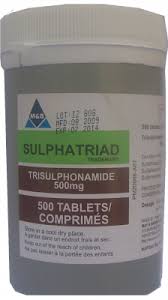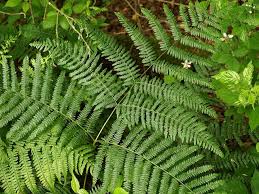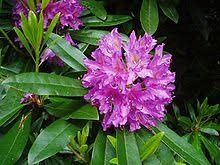 So far this week my lectures have varied quite a bit. The main themes so far have been animal toxicology and therapeutics (when to use the right antimicrobial which is a human made antibacterial drug or antibiotic which is a naturally synthesised drug) with varied interest levels from me!
So far this week my lectures have varied quite a bit. The main themes so far have been animal toxicology and therapeutics (when to use the right antimicrobial which is a human made antibacterial drug or antibiotic which is a naturally synthesised drug) with varied interest levels from me!
Therapeutics are of extreme importance with the growing concern of antibiotic resistance. There are a lot of rules concerning drugs, certification and the 'cascade rules' of drug use, of which I need to go through again to truly understand it. One of the main things I gleaned from these lectures- don't use fluroquinolone to treat E.Coli mastitis- either use sulphonamides or leave the case to resolve on its own. The antibiotic use in the UK needs to be a bit more regulated- especially with the farm animal side of the industry. I also learnt a bit about human generics of drugs, and prescriptions.
 Not sure how I feel about the extra charges that I see levied on some drugs when the human alternatives are a lot cheaper. Not to say that human doses of a drug are advocated for any animal- a vet should be consulted first. I was also interested to see that homeopathic drugs also come under licensed medicine- even though they're not really proven by efficacy. The homeopathic route is one which interests me, but our work needs to be based on 'scientific evidence based medicine' which makes the unproven homeopathic route one which is hard to take. However, its definately something I intend to do more research into. This will start with the book I recently purchased- homeopathic care for dogs and cats. It seems a reasonably good book and details advice for owners on different remedies to try and also the points when they should really consult with their vet. I think the divide between vets are allopathic (traditional) and homeopathic (alternative herbal based medicines). Whilst there isn't much based evidence for homeopathy I do not believe it is a route of medicine should not be disregarded, especially if a dog is not responding to conventional treatments.
Not sure how I feel about the extra charges that I see levied on some drugs when the human alternatives are a lot cheaper. Not to say that human doses of a drug are advocated for any animal- a vet should be consulted first. I was also interested to see that homeopathic drugs also come under licensed medicine- even though they're not really proven by efficacy. The homeopathic route is one which interests me, but our work needs to be based on 'scientific evidence based medicine' which makes the unproven homeopathic route one which is hard to take. However, its definately something I intend to do more research into. This will start with the book I recently purchased- homeopathic care for dogs and cats. It seems a reasonably good book and details advice for owners on different remedies to try and also the points when they should really consult with their vet. I think the divide between vets are allopathic (traditional) and homeopathic (alternative herbal based medicines). Whilst there isn't much based evidence for homeopathy I do not believe it is a route of medicine should not be disregarded, especially if a dog is not responding to conventional treatments.
Toxicology was a lot more interesting that I thought. We learnt a few common toxic plants found in fields and their toxic agent and clinical signs and treatment. All very interesting stuff, especially as we were given a few different scenarios to work out :). I also learnt that activated charcoal for poisoning would be a very good thing to have around the house.. The plants are below with the toxic principles related to signs seen in sheep (book= Sheep flock health, a planned approach, very good overall sheep book):
 |
| Ragwort plants- yellow. |
1. Ragwort. Main toxic agent is pyrrolizidine alkaloids. These are transformed in the liver to reactive pyrrols which are hepatotoxins causing cell necrosis, inhibition of mitosis (resulting in megalocytes) and vascular damage. Usually results in a chronic liver disease leading to liver failure. The main UK plant is Senecio Jacobea. Mature flowering plants are most toxic, and plants become palatable when they are cut and somehow end up in the hay that the horse eats. Cattle and horses are most affected by these toxins. Sheep are less susceptible as they can detoxify ragwort toxins in the rumen. In sheep, some animals die from chronic copper poisoning as hepatocyte damage releases copper which has been ingested in large amounts into the blood stream. Gross and clinical findings= diffuse subendocardial haemorrhage, inflammation of gut, cirrhosis of liver and spongiotic degeneration of the brain and spinal cord. Diagnosis is based on ragwort availability, clinical signs, elevated serum AST/GGT concentrations or liver biopsy can support the diagnosis.
 |
| Yew. |
2. Alkaloids e.g. Yew/Laburnum.
Yew- cattle and sheep are predisposed mainly due to grazing pressures if there is little to eat in the surrounding pasture. All parts of the tree are poisonous, and the main principle is taxine. This has a strong depressive effect on the heart an possible also affect the respiratory centre in the brain. Clinical signs are generally sudden death. Trembling, bradycardia, dyspnoea and collapse are other clinical signs. The abomasum at PM is distended with gas. Rumenotomy, removal of contents and supportive therapy are the only treatment options.
 |
| Laburnum |
Laburnum- all parts of the tree are toxic especially the bark and seeds. The main toxic principle is cystine which stimulates the respiratory centre of the brain, causes excitation of skeletal muscle and paralyses the peripheral sympathetic nerve ganglia. Animals show abdominal pain, muscular spasms, salivation, incoordination, regurgitation and diarrhoea. No specific treatments for this condition are available.
 |
| Foxgloves. |
3. Foxgloves- contain digitoxin and digitalin. These toxins increase contractility and slow the heart rate. Moderate intoxication results in bradycardia, depression, regurgitation, and diarrhoea whilst large amounts of toxin cause cardiac irregularities- bradycardia, tachycardia and dysrhythmia. Signs develop within 12 hours and persist for up to 3 days. Most deaths occur within 24 hours. Treatment may be supportive therapy, atropine (0.5mg/kg), and propanolol (5mg dosed to effect). Oral administration of charcoal (5g/kg) and rumenotomy have also been reported to be effective.
4. Bracken- The whole plant is poisonous with younger plants having higher toxicity. Poisoning occurs when animals are forced to eat a diet of bracken- in dry summer/autumn. Large amounts need to be ingested over a few weeks before poisoning is seen. Major toxic principles are:
 |
| Bracken. |
- Cardiogenic glycoside.
- Thiaminase- poisoning in monogastrics.
- Ptaquiloside- cardiogenic glycoside.
- Aplastic anaemia factor.
- Prunasin- cardiogenic glycoside.
Generally affects cattle more than sheep. Peractue harmorrhagic disease with haemangiomas of the bladder wall. Ill thrift, depression, exercise intolerance, anorexia and anaemia. Prolonged exposure in some sheep is associated with progressive retinal degeneration 'bright blindness' where the eyes shine abnormally in semi darkness. High prevalence of squamous cell carcinomas and papillomas reported in the jaw in sheep grazing bracken. Prevention is difficult.

The last plant we will consider is Rhododendron poisoning. They contain andromedotoxin which give rise to hypotension, respiratory depression, CNS depression after an initial transient excitation period. It is commonly seen in sheep after snow where they are forced to graze on hedges. Clinical signs include excessive salivation, green froth around the mouth/nose, attempts to retch, severe abdominal point, a staggering gait and possible recumbency. Death may follow after 3-7 days. Several treatments have been tried including purgatives and stimulants e.g. caffeine. Supported therapy is reccomended with many cases recovering within 7-14 days. Do not administer fluids by stomach tube as this evokes a painful nervous response.
Laurel is also a poisonous plant.